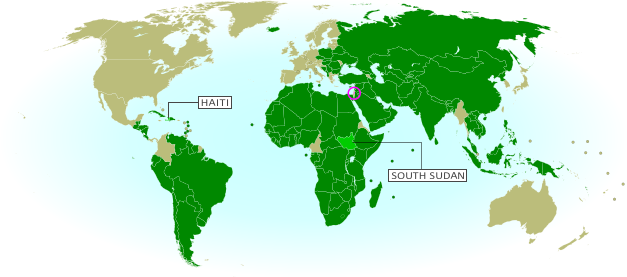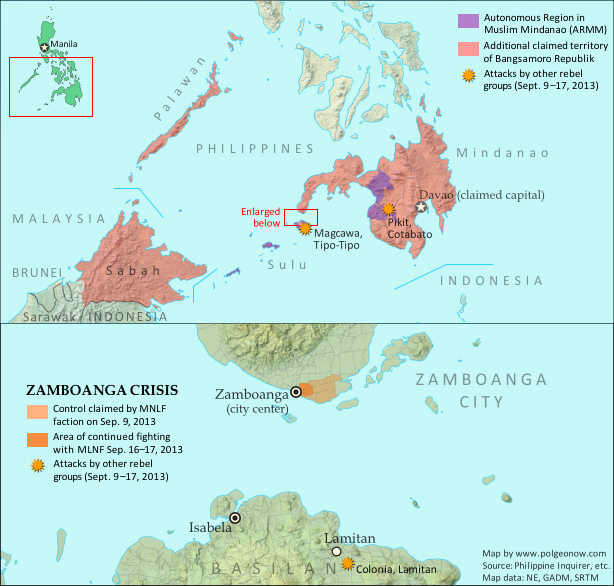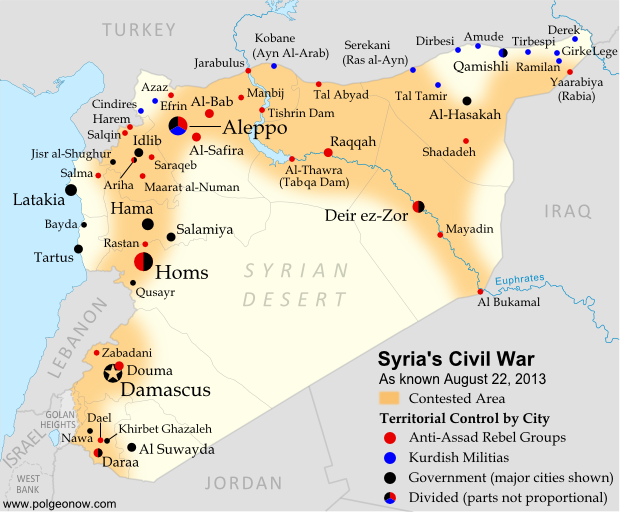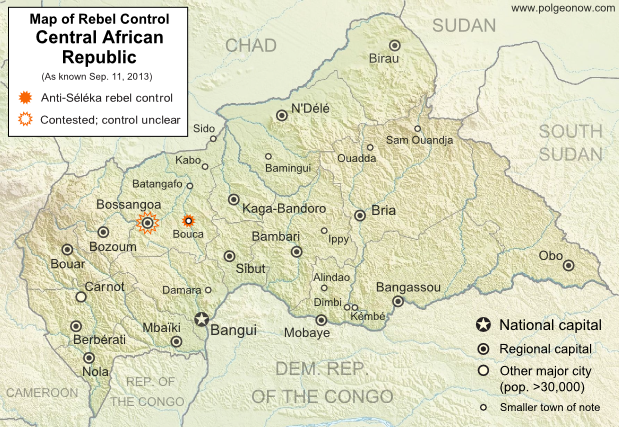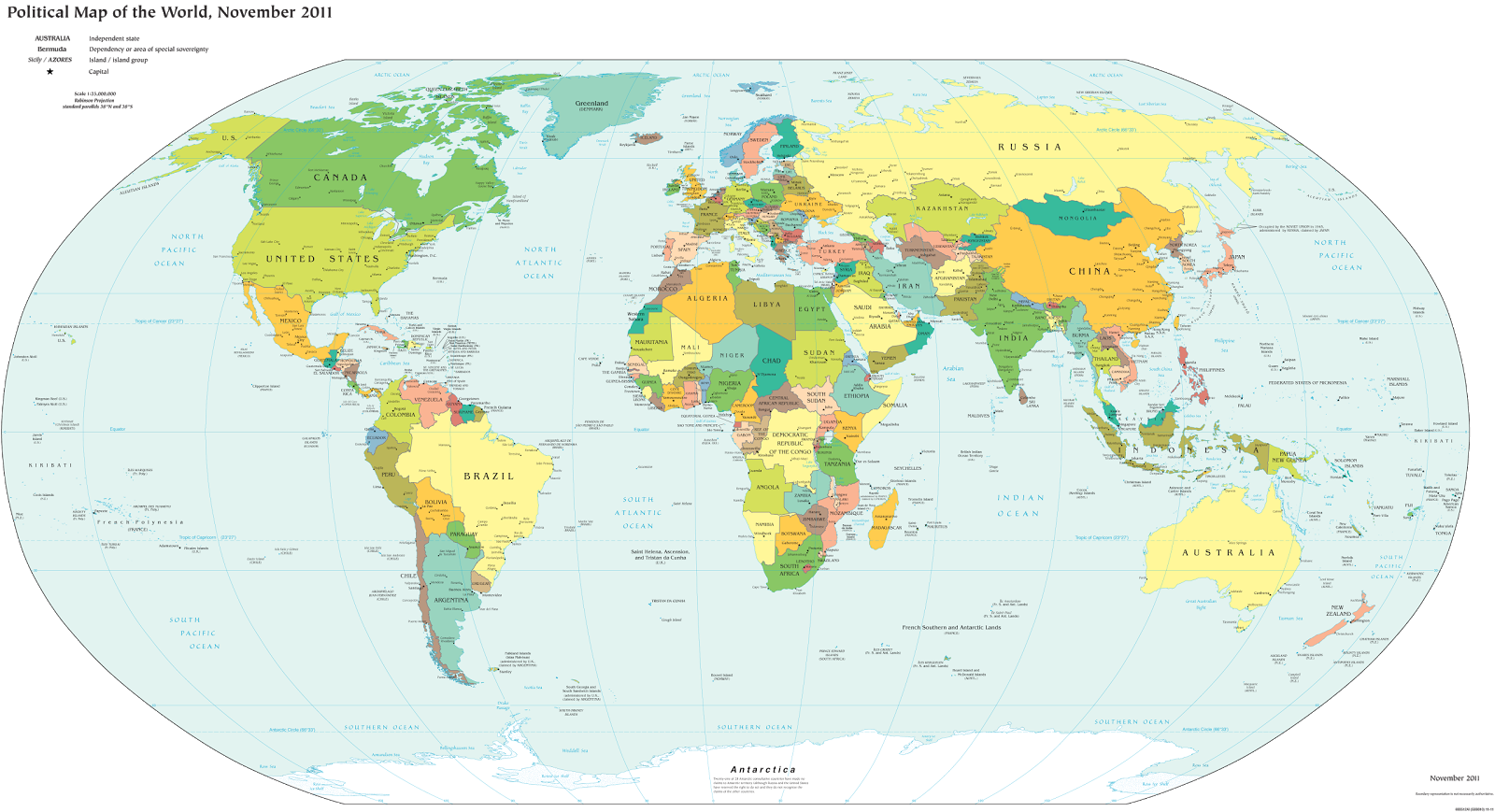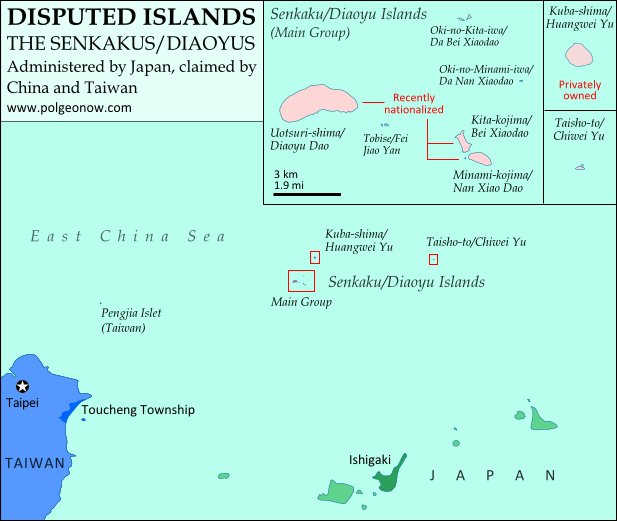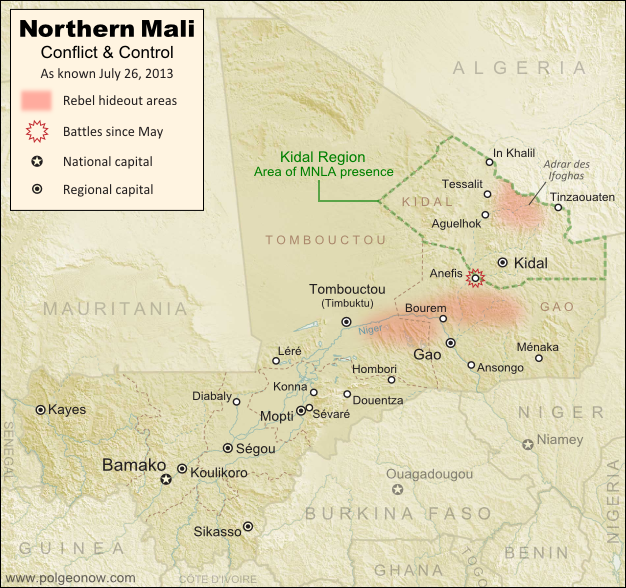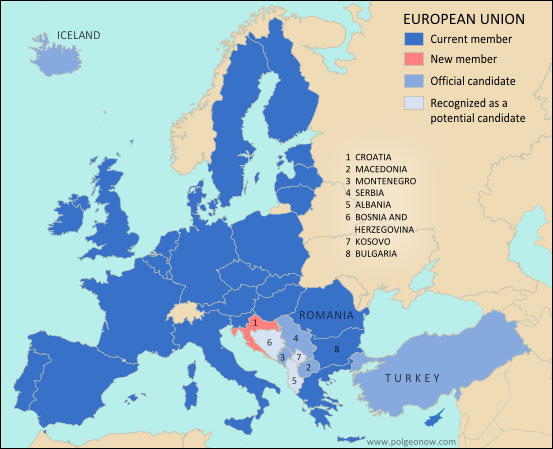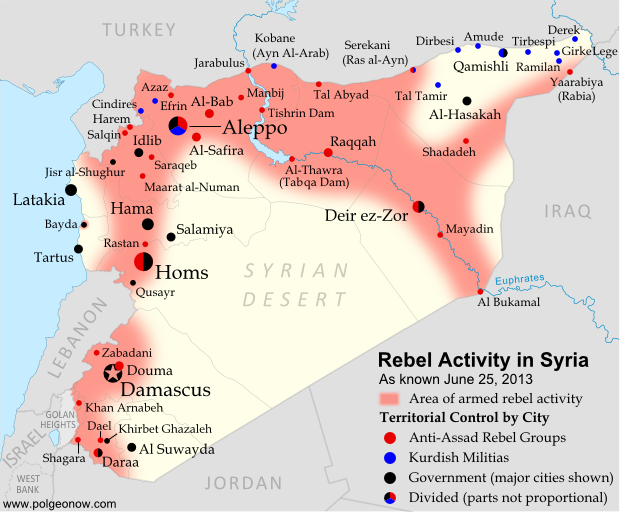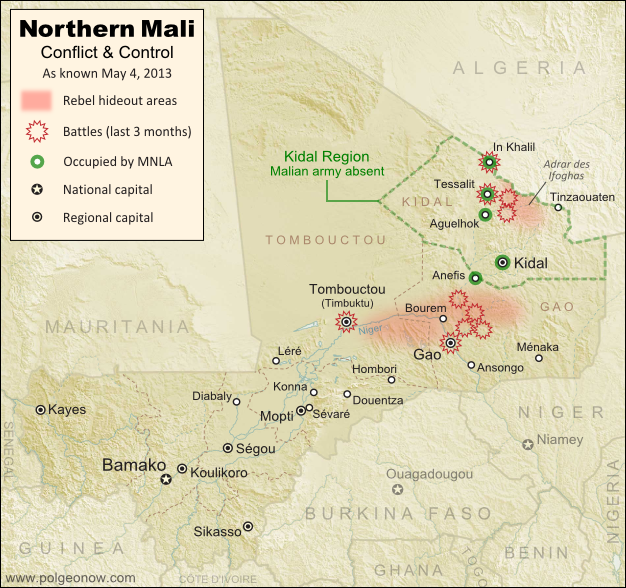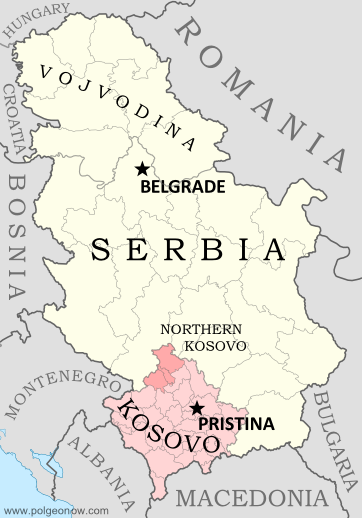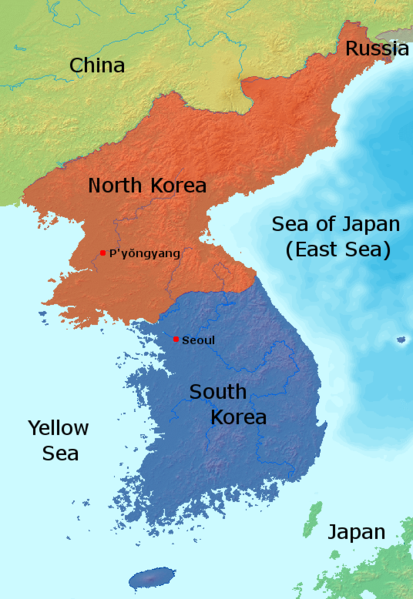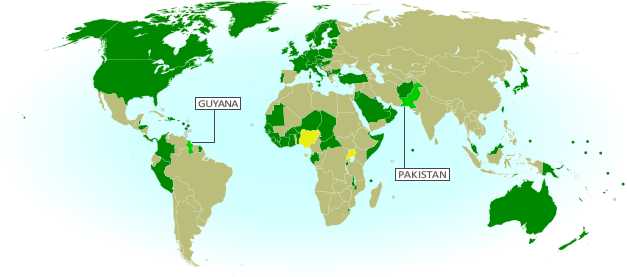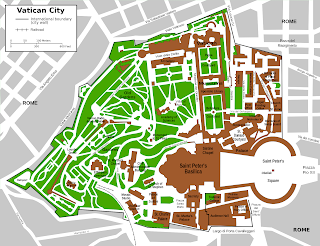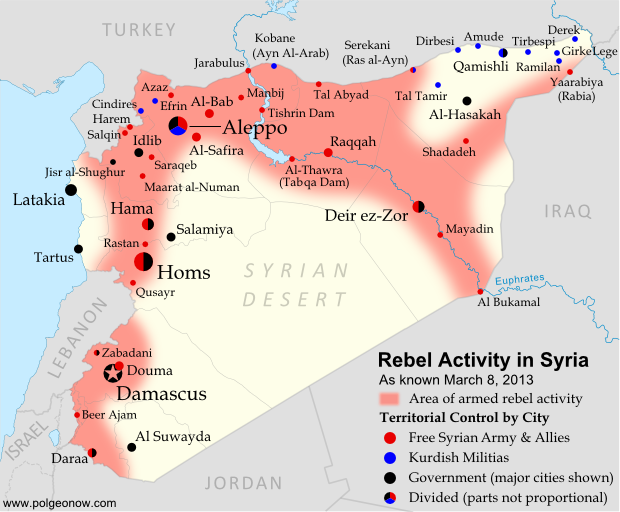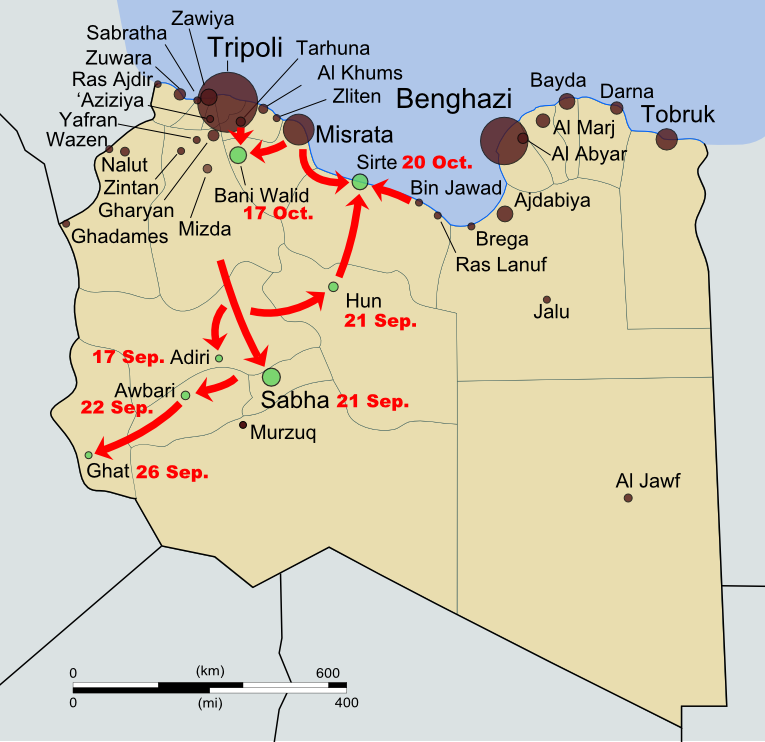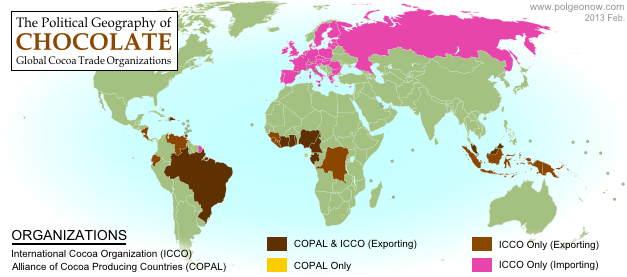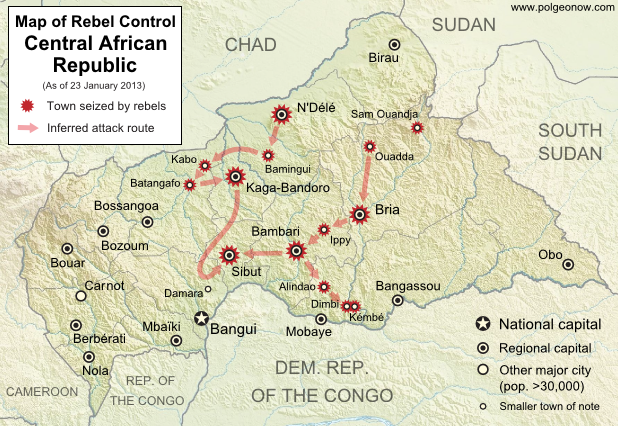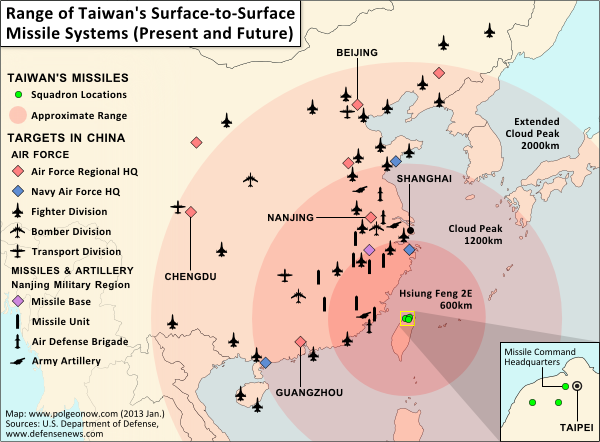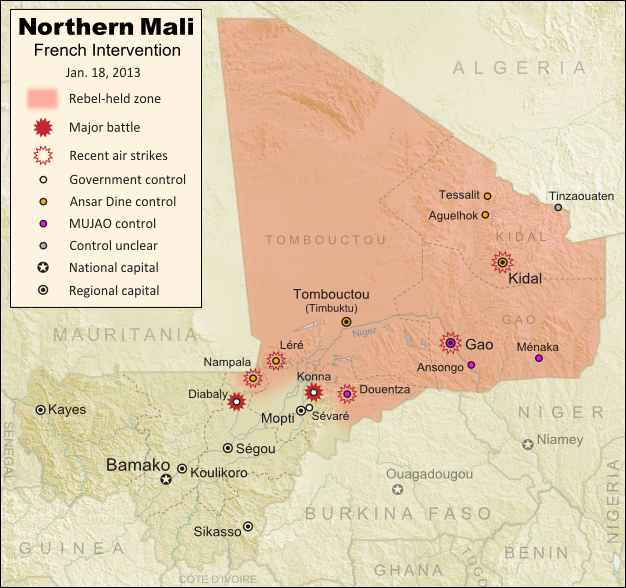Premium members click here to view this article in the ad-free members area. Not a member yet? Subscribe now!
Although popular for maps of territorial control in conflict zones, PolGeoNow's original mission is tracking formal changes to the world's political geography. When new countries appear, borders change, and territorial disputes arise or are settled, you'll hear about it here. As 2013 draws to a close, here's our look back at the major events of the year:
 |
| "State of Palestine" |
Country Name Changes
This year didn't see the creation of any new countries (unless you count the failed bid of the Bangsamoro Republik), but there were a few changes to country names. In October, the African island country of Cape Verde chose to change its official English name to "Cabo Verde", with the long form being "Republic of Cabo Verde". This brings it in line with the name in Portuguese, the country's official language. Meanwhile, in January, Libya established its full name as "State of Libya," after more than a year of going without an official long-form name. Since the 2011 revolution, the new government had been calling the country anything but Muammar Gaddafi's preferred "Great Socialist People's Libyan Arab Jamahiriya".




